|
UCI events can be registered in the UCI calendar in the following categories and the following requirements shall be fulfilled:
Class A events:
- Minimum of 4 participating nations
- Minimum of 8 participants for single disciplines (total of age groups elite and juniors)
- Minimum of 4 teams for pair disciplines (total of age groups elite and juniors)
- Minimum of 4 teams for Artistic Cycling Team 4 (total of age groups elite and juniors)
- Members of the commissaires panel according to article 1.2.116 (UCI Regulations, Part I, General organisation of cycling as a sport): 1 UCI international commissaire as President of the Commissaires’ panel, 2 UCI international commissaires from 2 different nations as announcing commissaires, 2 licensed writing commissaires
Class A event organisers who are unable to fulfil all requirements, will not be entitled to register any class A event for the following two years. Ranking points for a class A event will in any case be awarded to the participating riders.
Class B events:
- Minimum of 2 participating nations
- Minimum of 5 participants for single disciplines (total of age groups elite and juniors)
- Minimum of 3 teams for pair disciplines (total of age groups elite and juniors)
- Minimum of 3 teams for Artistic Cycling Team 4 (total of age groups elite and juniors)
- Members of the commissaires panel according to article 1.2.116 (UCI Regulations, Part I): 1 UCI international commissaire or national commissaire as President of the Commissaires’ panel, 2 international commissaires or national commissaires as announcing commissaires, 2 licensed writing commissaires
If only one nation participates at a class B event, no ranking points will be awarded.
The procedure, rules and deadlines for the registration are published by the UCI.
UCI ranking :
The UCI ranking is calculated by adding all the points obtained by riders and teams (pair, Artistic Cycling Team 4) in all events listed below:
- World Championships (CM)
- World Cup events (CDM)
- Continental Championships (CC)
- Class A events (CLA)
- Class B events (CLB)
- National Championships (CN)
Point scale UCI ranking:
|
Position |
World
Championships |
Class A events, World Cup |
Continental Championships |
Class B events,
National Championships |
|
1 |
60 |
50 |
40 |
30 |
|
2 |
55 |
45 |
35 |
25 |
|
3 |
50 |
40 |
30 |
20 |
|
4 |
45 |
35 |
25 |
18 |
|
5 |
40 |
30 |
20 |
16 |
|
6 |
35 |
25 |
18 |
14 |
|
7 |
32 |
20 |
16 |
12 |
|
8 |
29 |
18 |
14 |
10 |
|
9 |
26 |
16 |
12 |
8 |
|
10 |
23 |
14 |
10 |
6 |
|
11 |
20 |
12 |
8 |
|
|
12 |
18 |
10 |
6 |
|
|
13 |
16 |
8 |
4 |
|
|
14 |
14 |
6 |
2 |
|
|
15 |
12 |
4 |
1 |
|
|
16 |
10 |
|
|
|
|
17 |
9 |
|
|
|
|
18 |
8 |
|
|
|
|
19 |
7 |
|
|
|
|
20 |
6 |
|
|
|
|
21 |
5 |
|
|
|
|
22 |
4 |
|
|
|
|
23 |
3 |
|
|
|
|
24 |
2 |
|
|
|
|
25 |
1 |
|
|
|
Points can only be awarded to riders and teams (pair, Artistic Cycling Team 4) in the age groups elite and U19. For teams in which riders of the age groups U13 and/or U15 also compete, no points can be awarded.
If there is a tie for the first place, the ranking of the concerned riders and teams (pair, Artistic Cycling Team 4) shall be decided by their ranking in the most recent event of the season, in the following order:
- World Championships (CM)
- World Cup events (CDM)
- Continental Championships (CC)
- Class A events (CLA)
- Class B events (CLB)
- National Championships (CN)
Results:
National Federations and commissaires are required to submit the results according to the UCI DataRide procedure in place for the discipline of competition.
- Results of class A and class B events as well as Continental and National events:
The respective National Federation/Chief Commissaire shall submit the results to the UCI.
- World Cup and World Championships results:
The UCI Chief Commissaire shall submit the results to the UCI.
Ranking publications:
The classifications shall be published on 28 February, 30 April, 30 June, 31 August, 30 September, 31 October and 31 December.
(text modified on 01.01.18)
|
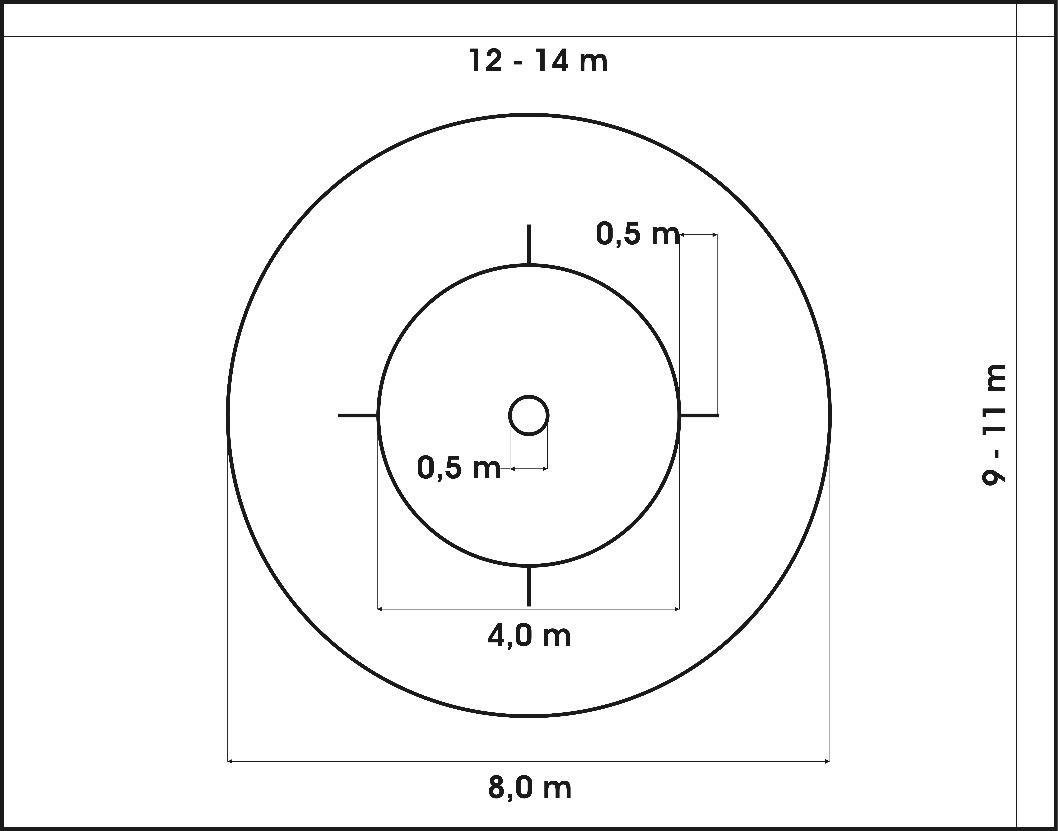



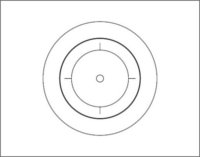 Only the distance ridden outside the middle circle (4 metres) is valid for the evaluation. During the execution of a circle the distance to the centre of the riding-area must stay the same for the total way of stretch.
Only the distance ridden outside the middle circle (4 metres) is valid for the evaluation. During the execution of a circle the distance to the centre of the riding-area must stay the same for the total way of stretch.
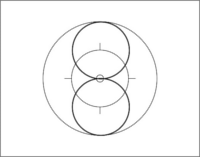 An eight is formed by two circles. Both circles must have the same diametre with a minimum of 4 metres. The inner-circle (50 cm) is to be crossed twice during the execution of an 8. The circles have to be executed each, at an opposite located half of the riding-area. The riding-area is divided, imaginary, in 2 halves by a line through the middle of the riding-area.
An eight is formed by two circles. Both circles must have the same diametre with a minimum of 4 metres. The inner-circle (50 cm) is to be crossed twice during the execution of an 8. The circles have to be executed each, at an opposite located half of the riding-area. The riding-area is divided, imaginary, in 2 halves by a line through the middle of the riding-area.
 A half eight is formed by two half circles. Both half circles must have the same diametre with a minimum of 4 metres. The inner circle (50 cm) is to be crossed once during the execution of a S. The sequence of the figure starts at the longitudinal or transverse axis of the riding-area. The half circles have to be executed at two, across from each other, placed quarters of the riding-area (one half circle at each quarter).
A half eight is formed by two half circles. Both half circles must have the same diametre with a minimum of 4 metres. The inner circle (50 cm) is to be crossed once during the execution of a S. The sequence of the figure starts at the longitudinal or transverse axis of the riding-area. The half circles have to be executed at two, across from each other, placed quarters of the riding-area (one half circle at each quarter).
 Each rider executes an eight in contrary to the partner. The sequence of the figure starts at the centre of the riding- area with a touch of hands (except handstand) of the riders. The figure ends after completing the total way of stretch with a touch of hands (except handstand) of the riders again at the centre of the riding-area.
Each rider executes an eight in contrary to the partner. The sequence of the figure starts at the centre of the riding- area with a touch of hands (except handstand) of the riders. The figure ends after completing the total way of stretch with a touch of hands (except handstand) of the riders again at the centre of the riding-area.
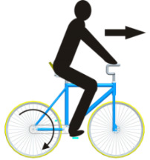 Each rider executes each on a separate half of the riding-area a complete circle with a minimum diametre of 4 metres around a point. The two points are lying with the same distance to the inner circle on the longitudinal axis.
Each rider executes each on a separate half of the riding-area a complete circle with a minimum diametre of 4 metres around a point. The two points are lying with the same distance to the inner circle on the longitudinal axis.
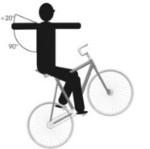 If free-hand (frh.) is written in the context of a figure, neither the handlebar, the bicycle(s), nor the partners may be touched during the total way of stretch of the figure. Exceptions are described at the explanations of figures.
If free-hand (frh.) is written in the context of a figure, neither the handlebar, the bicycle(s), nor the partners may be touched during the total way of stretch of the figure. Exceptions are described at the explanations of figures.
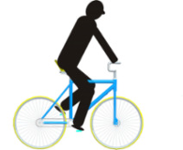 Except figures with the text “raiser” all figures are to be performed with both wheels on the floor during the total way of stretch of the figure.
Except figures with the text “raiser” all figures are to be performed with both wheels on the floor during the total way of stretch of the figure.
 If “raiser” is written in the context of a figure, the total way of stretch of the figure has to be performed in the described raiser-position.
If “raiser” is written in the context of a figure, the total way of stretch of the figure has to be performed in the described raiser-position.
 All of the figures are to be performed in forward direction if they are not marked as backward. Exceptions are described in the explanations of figures.
All of the figures are to be performed in forward direction if they are not marked as backward. Exceptions are described in the explanations of figures.
 When figures are marked with “backward” they have to be performed during the total way of stretch of the figure in the backward direction. Exceptions are described in the explanations of figures.
When figures are marked with “backward” they have to be performed during the total way of stretch of the figure in the backward direction. Exceptions are described in the explanations of figures.

 Except figures with the text “raiser” all figures are to be performed with both wheels on the floor during the total way of stretch of the figure. Exceptions are described in the explanations of figures.
Except figures with the text “raiser” all figures are to be performed with both wheels on the floor during the total way of stretch of the figure. Exceptions are described in the explanations of figures.
 If ”raiser” is written in the context of a figure, the total way of stretch of the figure has to be performed in the described raiser-position. The rider sits on the saddle, each foot is on a different pedal and only the rear wheel should touch the floor.
If ”raiser” is written in the context of a figure, the total way of stretch of the figure has to be performed in the described raiser-position. The rider sits on the saddle, each foot is on a different pedal and only the rear wheel should touch the floor.
 All the figures have to be performed forward during the total way of stretch, if they are not marked as backward. Exceptions are described in the explanations of figures. The forward direction has to be executed as shown in the drawing.
All the figures have to be performed forward during the total way of stretch, if they are not marked as backward. Exceptions are described in the explanations of figures. The forward direction has to be executed as shown in the drawing.
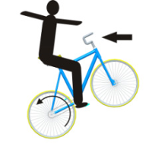 When figures are marked as “backward” they have to be performed backward during the total way of stretch. Exceptions are described in the explanations of figures. The backward direction has to be executed as shown in the drawing.
When figures are marked as “backward” they have to be performed backward during the total way of stretch. Exceptions are described in the explanations of figures. The backward direction has to be executed as shown in the drawing.
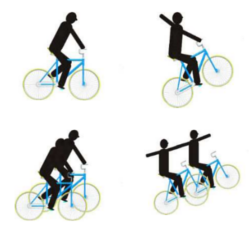 In figures which do not have free-hand (frh.) in the context of the figure, the riders have to grab with their not connected hands the handlebar and/or to ride free-hand.
In figures which do not have free-hand (frh.) in the context of the figure, the riders have to grab with their not connected hands the handlebar and/or to ride free-hand.
 If free-hand (frh.) is written in the explanations of a figure, the whole way of stretch has to be shown free- hand. A free-hand way of stretch means, that neither the handlebar, the bicycle(s), nor the partners are allowed to be touched during the total way of stretch of a figure. Possible exceptions are described in the explanations of figures.
If free-hand (frh.) is written in the explanations of a figure, the whole way of stretch has to be shown free- hand. A free-hand way of stretch means, that neither the handlebar, the bicycle(s), nor the partners are allowed to be touched during the total way of stretch of a figure. Possible exceptions are described in the explanations of figures.
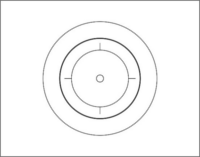 Only the distance ridden outside the middle-circle (4 metres) is valid for the evaluation. During the execution of a circle the distance to the centre of the riding-area must stay the same for the total way of stretch.
Only the distance ridden outside the middle-circle (4 metres) is valid for the evaluation. During the execution of a circle the distance to the centre of the riding-area must stay the same for the total way of stretch.

 Reg. seat
Reg. seat
 Reg. seat rev.
Reg. seat rev.
 Steering with feet
Steering with feet
 Lady seat
Lady seat
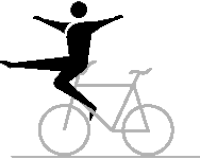 Handlebarseat
Handlebarseat
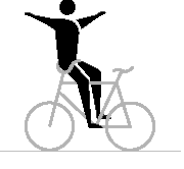 Handlebarseat rev.
Handlebarseat rev.
 Split
Split
 Split rev.
Split rev.
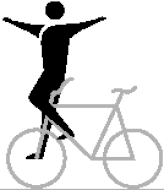 Frontstand
Frontstand
 Backstand
Backstand
 Side pedal stand
Side pedal stand
 Sidestand foot cranking
Sidestand foot cranking
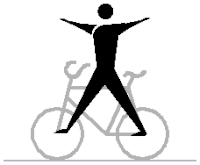 Sidestand
Sidestand
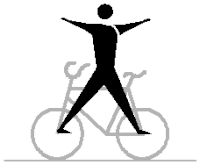 Sidestand rev.
Sidestand rev.
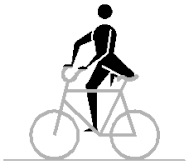 Side kneeling foot cranking
Side kneeling foot cranking
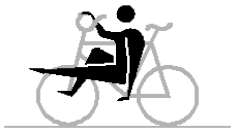 Frameseat
Frameseat
 Stand on pins
Stand on pins
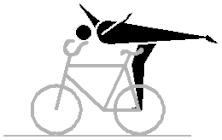 Stand bent on pin
Stand bent on pin
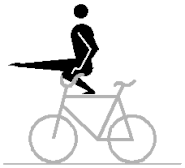 Bent knee seat
Bent knee seat
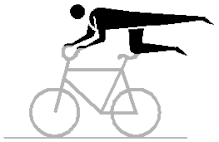 Knee on saddle
Knee on saddle
 Stand bent on saddle
Stand bent on saddle
 Stand bent on frame
Stand bent on frame
 Stand bent on frame rev.
Stand bent on frame rev.
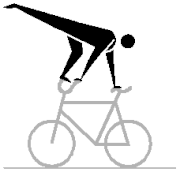 Stand bent on handlebar rev.
Stand bent on handlebar rev.
 Pedal side stand rev.
Pedal side stand rev.
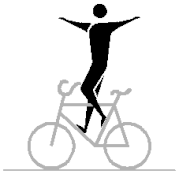 Framestand
Framestand
 Framestand rev.
Framestand rev.
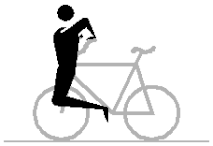 Fronthang
Fronthang
 Backhang
Backhang
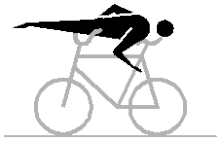 Lying on handlebar
Lying on handlebar
 Lying on saddle, Lying on saddle and handlebar
Lying on saddle, Lying on saddle and handlebar
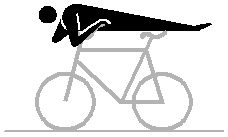 Waterscale
Waterscale
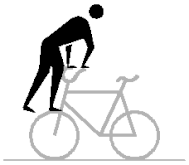 Walk on front wheel 1⁄4 circle
Walk on front wheel 1⁄4 circle
 Saddle handlebarstand
Saddle handlebarstand
 Saddlestand
Saddlestand
 Fronthandlebarstand, Fronthandlebarstand turn T
Fronthandlebarstand, Fronthandlebarstand turn T
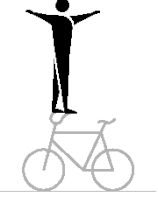 Handlebarstand rev.
Handlebarstand rev.
 Saddle support scale
Saddle support scale
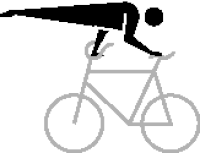 Handlebar support scale
Handlebar support scale
 Handlebar grip scale, legs front
Handlebar grip scale, legs front
 Handlebar grip scale, legs rear
Handlebar grip scale, legs rear
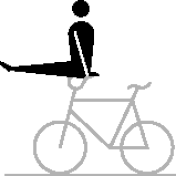 Handlebar L-shape hold
Handlebar L-shape hold
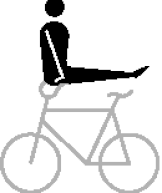 Handlebar L-shape hold rev.
Handlebar L-shape hold rev.
 Handlebar support straddle, Saddle support straddle.
Handlebar support straddle, Saddle support straddle.
 Headstand
Headstand
 Shoulderstand
Shoulderstand
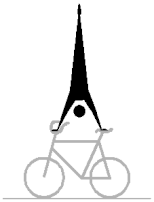 Saddle handlebar handstand
Saddle handlebar handstand
 Handlebar handstand
Handlebar handstand
 Stillstand on pedals, Stillstand pedal front wheel
Stillstand on pedals, Stillstand pedal front wheel
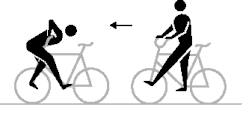 Sidestand turn
Sidestand turn
 Reg. seat squat
Reg. seat squat
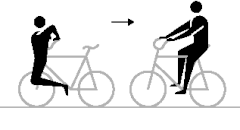 Fronthang squat
Fronthang squat
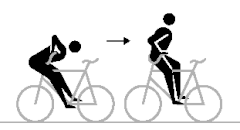 Backhang squat
Backhang squat
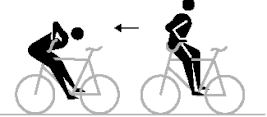 Handlebarseat rev. squat
Handlebarseat rev. squat
 Handlebarseat rev. Scissors jump
Handlebarseat rev. Scissors jump
 Turning jump / Turning-scissors jump
Turning jump / Turning-scissors jump
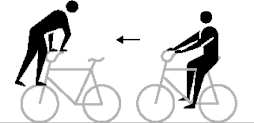 Turning jump
Turning jump
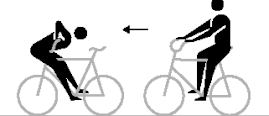 Turning jump
Turning jump
 Turning jump (T)
Turning jump (T)
 Pedal jump
Pedal jump
 Maute jump
Maute jump
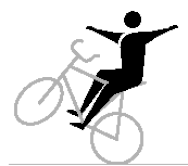 Raiser reg. seat
Raiser reg. seat
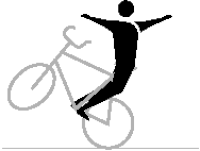 Raiser reg. seat rev.
Raiser reg. seat rev.
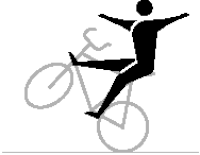 Raiser lady seat
Raiser lady seat
 Raiser stand on pin / raiser stand on pin bw.
Raiser stand on pin / raiser stand on pin bw.
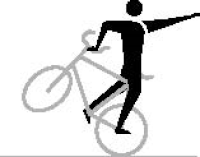 Raiser stand on pin rev.
Raiser stand on pin rev.
 Raiser handlebarseat
Raiser handlebarseat
 Raiser handlebarseat rev.
Raiser handlebarseat rev.
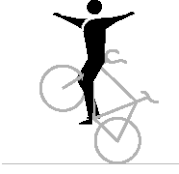 Raiser head tube
Raiser head tube
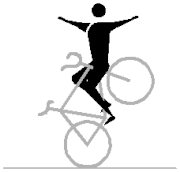 Raiser head tube rev.
Raiser head tube rev.
 Standraiser
Standraiser
 Standraiser rev.
Standraiser rev.
 Handstand bicycle lying down
Handstand bicycle lying down
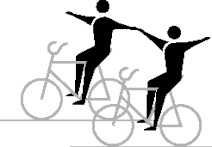 Reg. seat
Reg. seat
 Reg. seat rev.
Reg. seat rev.
 Steering with feet
Steering with feet
 Lady seat
Lady seat
 Handlebarseat
Handlebarseat
 Handlebarseat rev.
Handlebarseat rev.
 Split
Split
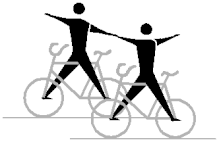 Split rev.
Split rev.
 Frontstand
Frontstand
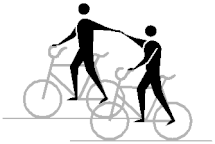 Sidestand foot cranking
Sidestand foot cranking
 Sidestand
Sidestand
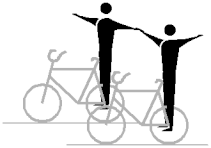 Stand on pins
Stand on pins
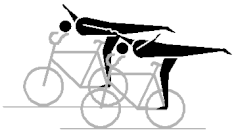 Stand bent on pin
Stand bent on pin
 Bent knee seat
Bent knee seat
 Knee on saddle
Knee on saddle
 Lying on saddle; Lying on saddle and handlebar
Lying on saddle; Lying on saddle and handlebar
 Waterscale
Waterscale
 Framestand
Framestand
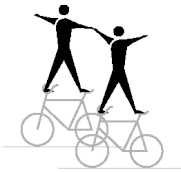 Saddle handlebarstand
Saddle handlebarstand
 Saddlestand
Saddlestand
 Fronthandlebarstand, Fronthandlebarstand turn (T)
Fronthandlebarstand, Fronthandlebarstand turn (T)
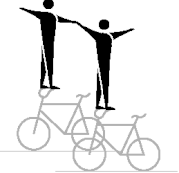 Handlebarstand rev.
Handlebarstand rev.
 Headstand
Headstand
 Shoulderstand
Shoulderstand
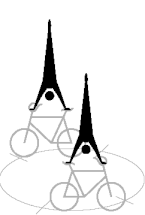 Saddle handlebar handstand
Saddle handlebar handstand
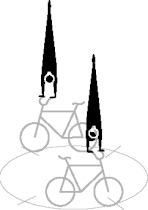 Handlebar handstand
Handlebar handstand
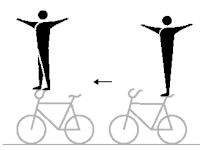 Maute jump
Maute jump
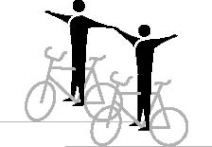 Stillstand on pedals, Stillstand pedal front wheel
Stillstand on pedals, Stillstand pedal front wheel
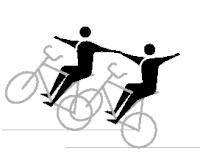 Raiser reg. seat
Raiser reg. seat
 Raiser reg. seat rev.
Raiser reg. seat rev.
 Raiser lady seat
Raiser lady seat
 Raiser stand on pins
Raiser stand on pins
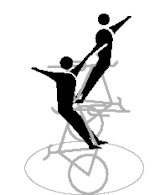 Raiser handlebarseat
Raiser handlebarseat
 Raiser handlebarseat rev.
Raiser handlebarseat rev.
 Raiser head tube
Raiser head tube
 Raiser head tube rev.
Raiser head tube rev.
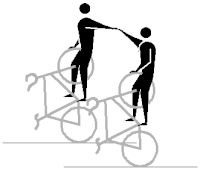 Standraiser
Standraiser
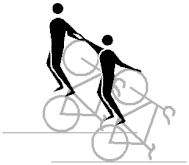 Standraiser rev.
Standraiser rev.
 Reg. seat / Stand on pins, Saddlestand
Reg. seat / Stand on pins, Saddlestand
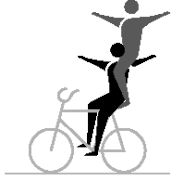 Reg. seat / Shoulderseat
Reg. seat / Shoulderseat
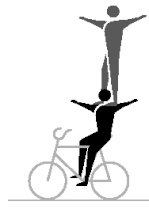 Reg. seat / Shoulderstand
Reg. seat / Shoulderstand
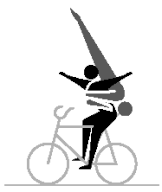 Reg. seat / Chest suspended hang
Reg. seat / Chest suspended hang
 Reg. seat / Handlebarstand
Reg. seat / Handlebarstand
 Reg. seat / Handlebar handstand
Reg. seat / Handlebar handstand
 Reg. seat rev. / Shoulderseat
Reg. seat rev. / Shoulderseat
 Reg. seat rev. / Shoulderstand
Reg. seat rev. / Shoulderstand
 Reg. seat rev. / Chest suspended hang
Reg. seat rev. / Chest suspended hang
 Handlebarseat / Stand on pins, Saddlestand
Handlebarseat / Stand on pins, Saddlestand
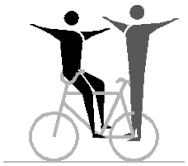 Handlebarseat rev. / Stand on pins
Handlebarseat rev. / Stand on pins
 Handlebarseat rev. / Saddle- handlebarstand, Saddlestand
Handlebarseat rev. / Saddle- handlebarstand, Saddlestand
 Handlebarseat rev. / Shoulderseat
Handlebarseat rev. / Shoulderseat
 Handlebarseat rev. / Shoulderstand
Handlebarseat rev. / Shoulderstand
 Handlebarseat rev. / Chest suspended hang
Handlebarseat rev. / Chest suspended hang
 Handlebarseat rev. / Headstand
Handlebarseat rev. / Headstand
 Frontstand / Stand on pins, Saddlestand
Frontstand / Stand on pins, Saddlestand
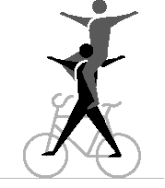 Split / Shoulderseat
Split / Shoulderseat
 Sidestand / Sidestand, Ring grip
Sidestand / Sidestand, Ring grip
 Stand bent on saddle / Stand bent on handlebar
Stand bent on saddle / Stand bent on handlebar
 Frameseat / Stand bent on saddle
Frameseat / Stand bent on saddle
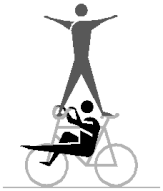 Frameseat / Saddle handlebarstand, Saddlestand
Frameseat / Saddle handlebarstand, Saddlestand
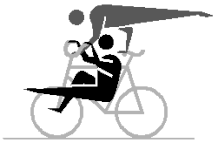 Frameseat / Saddle support scale
Frameseat / Saddle support scale
 Fronthang / Stand bent on saddle
Fronthang / Stand bent on saddle
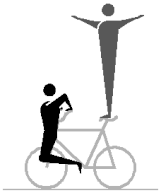 Fronthang / Saddle handlebarstand, Saddlestand
Fronthang / Saddle handlebarstand, Saddlestand
 Fronthang / Headstand, Saddle handlebar handstand
Fronthang / Headstand, Saddle handlebar handstand
 Backhang / Stand on pins
Backhang / Stand on pins
 Backhang / Saddle handlebarstand, Saddlestand
Backhang / Saddle handlebarstand, Saddlestand
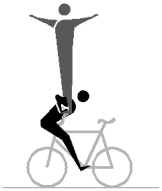 Backhang / Handlebarstand
Backhang / Handlebarstand
 Backhang / Headstand, Saddle handlebar handstand
Backhang / Headstand, Saddle handlebar handstand
 Lying on handlebar/ Stand bent on saddle, Saddlestand
Lying on handlebar/ Stand bent on saddle, Saddlestand
 Lying on saddle / Handlebarstand, Handlebarhandstand
Lying on saddle / Handlebarstand, Handlebarhandstand
 Waterscale / Stand bent on saddle, Saddlestand
Waterscale / Stand bent on saddle, Saddlestand
 Saddle handlebarstand / Saddle handlebarstand
Saddle handlebarstand / Saddle handlebarstand
 Saddle handlebarstand / Stand on pins, Saddlestand, Handlebarstand
Saddle handlebarstand / Stand on pins, Saddlestand, Handlebarstand
 Handlebarstand / Stand on pins
Handlebarstand / Stand on pins
 Handlebarstand / Saddlestand
Handlebarstand / Saddlestand
 Handlebar L-shape hold / Stand on pins, Saddlestand, Saddle support straddle
Handlebar L-shape hold / Stand on pins, Saddlestand, Saddle support straddle
 Handlebar support straddle / Saddle support straddle
Handlebar support straddle / Saddle support straddle
 Headstand / Handlebarstand
Headstand / Handlebarstand
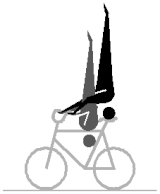 Headstand / Frame shoulderstand
Headstand / Frame shoulderstand
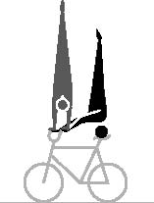 Headstand / Handlebar handstand
Headstand / Handlebar handstand
 Saddle handlebar handstand / Handlebarstand
Saddle handlebar handstand / Handlebarstand
 Handlebar handstand / Saddlestand
Handlebar handstand / Saddlestand
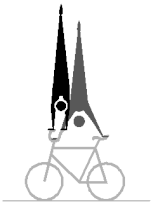 Handlebar handstand / Saddle handlebar handstand
Handlebar handstand / Saddle handlebar handstand
 Stillstand on pedals / Shoulderseat, Shoulderstand
Stillstand on pedals / Shoulderseat, Shoulderstand
 Raiser reg. seat / Stand on pins
Raiser reg. seat / Stand on pins
 Raiser reg. seat / Shoulderseat
Raiser reg. seat / Shoulderseat
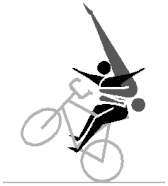 Raiser reg. seat / Chest suspended hang
Raiser reg. seat / Chest suspended hang
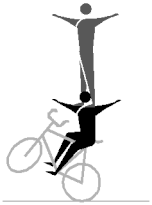 Raiser reg. seat / Shoulderstand
Raiser reg. seat / Shoulderstand
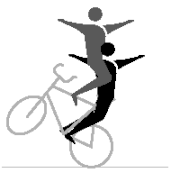 Raiser reg. seat rev. / Shoulderseat
Raiser reg. seat rev. / Shoulderseat
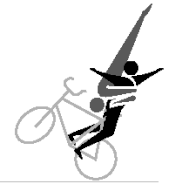 Raiser reg. seat rev. / Chest suspended hang
Raiser reg. seat rev. / Chest suspended hang
 Raiser reg. seat rev. / Shoulderstand
Raiser reg. seat rev. / Shoulderstand
 Raiser handlebarseat / Shoulderseat
Raiser handlebarseat / Shoulderseat
 Raiser handlebarseat / Shoulderstand
Raiser handlebarseat / Shoulderstand
 Raiser head tube / Shoulderseat
Raiser head tube / Shoulderseat
 Raiser head tube / Shoulderstand
Raiser head tube / Shoulderstand
 Raiser head tube rev. / Shoulderseat
Raiser head tube rev. / Shoulderseat
 Raiser head tube rev. / Shoulderstand
Raiser head tube rev. / Shoulderstand
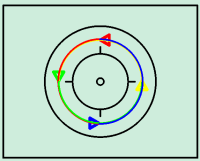
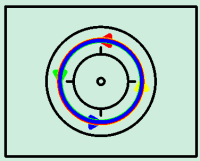


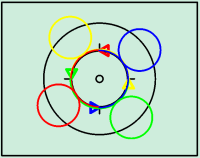



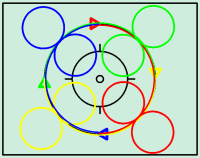
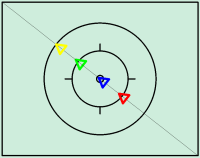


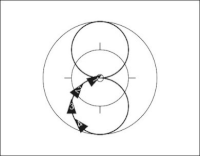
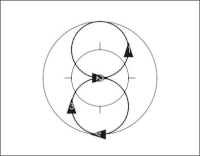
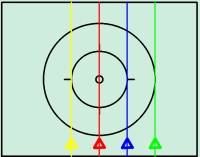
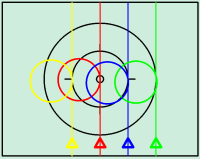
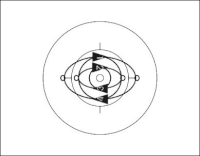


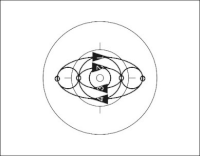


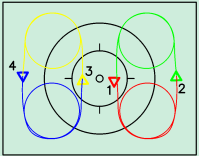
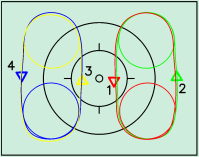
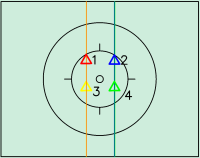

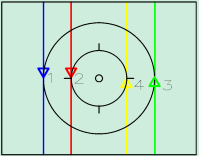
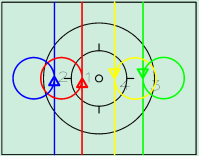

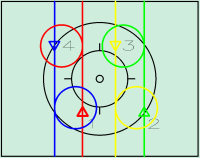

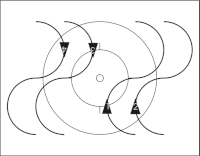
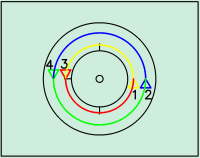






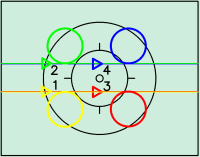

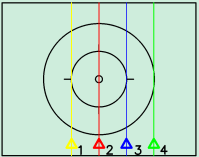

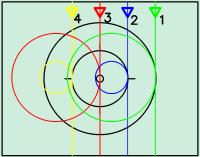 2 connected shortline 2 connected single rings right
2 connected shortline 2 connected single rings right

 2 connected shortline half counter single ring
2 connected shortline half counter single ring
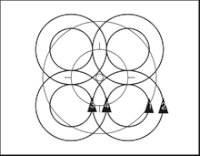 2 connected shortline counter single ring
2 connected shortline counter single ring
 2 connected shortline opposite
2 connected shortline opposite
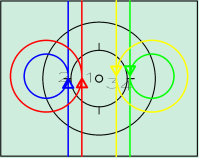 2 connected shortline opposite 2 connected single rings left
2 connected shortline opposite 2 connected single rings left
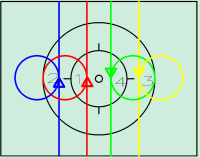 2 connected shortline opposite 4 single rings left
2 connected shortline opposite 4 single rings left
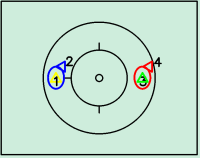 Surrounding 1 around 1
Surrounding 1 around 1
 Two mills
Two mills
 Two mills 4 single rings right
Two mills 4 single rings right
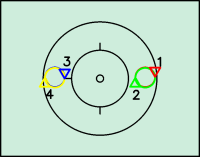 Two inside rings
Two inside rings
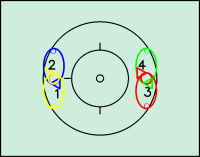 Two mills 3 spinnings
Two mills 3 spinnings
 Two inside rings 3 spinnings
Two inside rings 3 spinnings
 4 connected half circle
4 connected half circle
 4 connected circle
4 connected circle
 4 connected half circle 2 connected single rings left
4 connected half circle 2 connected single rings left
 4 connected circle 2 connected single rings left
4 connected circle 2 connected single rings left
 4 connected half circle 4 single rings left
4 connected half circle 4 single rings left
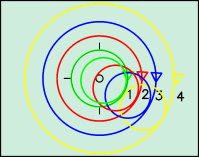 4 connected circle 4 single rings left
4 connected circle 4 single rings left
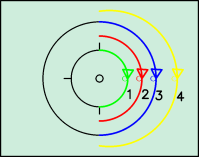 4 connected half circle 3 spinnings
4 connected half circle 3 spinnings
 4 connected circle 3 spinnings
4 connected circle 3 spinnings
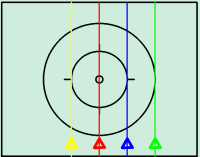
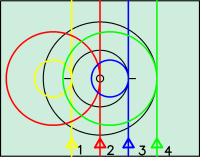 4 connected shortline 2 connected single rings left
4 connected shortline 2 connected single rings left
 4 connected shortline 2 connected single rings right
4 connected shortline 2 connected single rings right
 4 connected shortline 4 single rings left
4 connected shortline 4 single rings left
 4 connected shortline 2 single rings left 2 single rings right
4 connected shortline 2 single rings left 2 single rings right
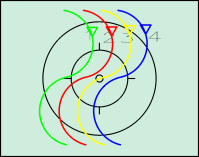 4 next to each other shortline half counter single ring
4 next to each other shortline half counter single ring
 4 next to each other short line counter single ring
4 next to each other short line counter single ring
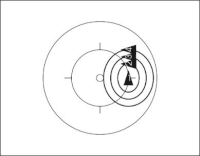 Surrounding 3 around 1
Surrounding 3 around 1
 Coach half circle
Coach half circle
 Coach circle
Coach circle
 Coach half circle raiser
Coach half circle raiser
 Coach circle raiser
Coach circle raiser
 Snake half circle
Snake half circle
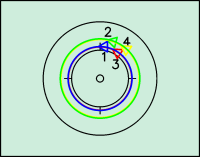 nake circle
nake circle
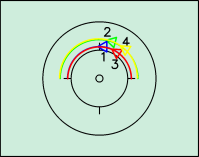 Chain half circle
Chain half circle
 Chain circle
Chain circle
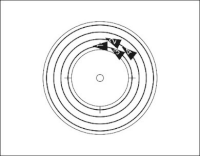 Chain circle raiser
Chain circle raiser
 Saddlegrip half circle
Saddlegrip half circle
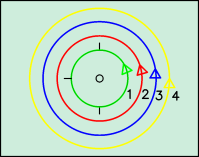 Saddlegrip Circle
Saddlegrip Circle
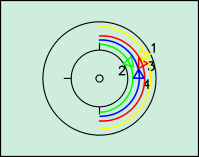 Saddlegrip pass through
Saddlegrip pass through
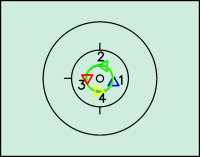 Saddlegrip-ring
Saddlegrip-ring
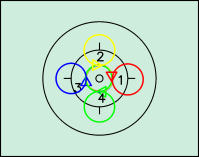 Saddlegrip-ring 4 single rings right
Saddlegrip-ring 4 single rings right
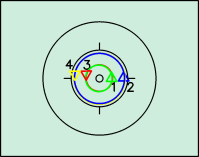 2 connected Wingmill
2 connected Wingmill
 2 connected wingmill half surrounding 2 connected single rings right
2 connected wingmill half surrounding 2 connected single rings right
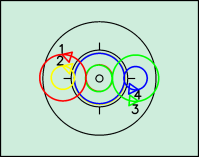 2 connected wingmill 2 connected single rings right
2 connected wingmill 2 connected single rings right
 2 connected wingmill half surrounding 4 single rings right
2 connected wingmill half surrounding 4 single rings right
 2 connected wingmill 4 single rings right
2 connected wingmill 4 single rings right
 2 connected wingmill mill with 2 single rings right
2 connected wingmill mill with 2 single rings right
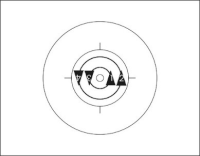 2 connected wingring
2 connected wingring
 2 connected wingmill mill with 2 following each other circle
2 connected wingmill mill with 2 following each other circle
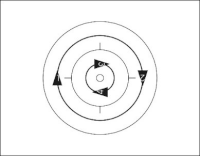 2 connected wingring insidering with 2 following each other circle
2 connected wingring insidering with 2 following each other circle
 2 connected wingmill mill with 3 spinnings
2 connected wingmill mill with 3 spinnings
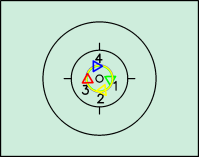 Mill
Mill
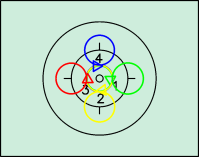 Mill 4 single rings right
Mill 4 single rings right
 Insidering around 1
Insidering around 1
 Insidering
Insidering
 Ring with opposite grips
Ring with opposite grips
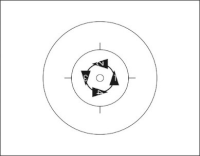 Ring with opposite grips HS followed by insidering HS
Ring with opposite grips HS followed by insidering HS
 Outsidering
Outsidering
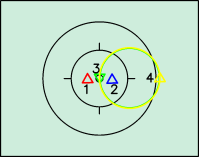 Half door
Half door
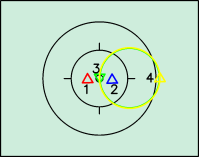 Door
Door
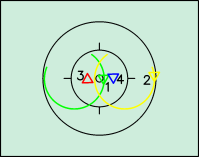 Half opposite direction door
Half opposite direction door
 Opposite direction door
Opposite direction door
 Opposite direction door simultaneously
Opposite direction door simultaneously
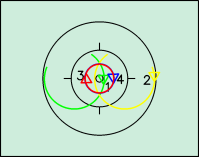 Mill with half opposite direction door
Mill with half opposite direction door
 Mill with opposite direction door
Mill with opposite direction door
 Mill with opposite direction door simultaneously
Mill with opposite direction door simultaneously
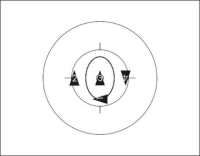 Double door
Double door
 Snake double door
Snake double door
 Turbine double door
Turbine double door
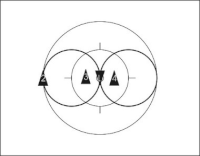 Counter single ring door
Counter single ring door
 Opposite direction door Counter single rings simultaneous
Opposite direction door Counter single rings simultaneous
 Mill with opposite direction door counter single ring simultaneous
Mill with opposite direction door counter single ring simultaneous
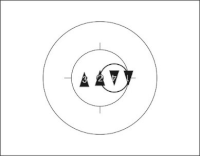 Half door ring
Half door ring
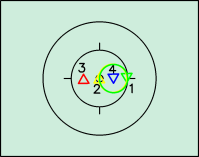 Door ring
Door ring
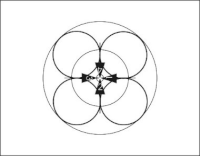 Star inside 4 single rings
Star inside 4 single rings
 Star inside
Star inside
 Star opposite direction
Star opposite direction
 Star outside
Star outside
 Star outside 4 single rings left
Star outside 4 single rings left
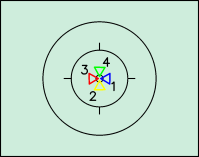 Star inside 1⁄2 turn on the spot
Star inside 1⁄2 turn on the spot
 Star inside 1 turn on the spot
Star inside 1 turn on the spot
 2 connected raiser turn on the spot (T)
2 connected raiser turn on the spot (T)
 4 connected raiser turn on the spot (T)
4 connected raiser turn on the spot (T)
 6 following each other half circle
6 following each other half circle
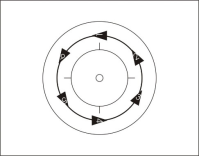 6 following each other Circle
6 following each other Circle
 6 following each other half circle 6 single rings left
6 following each other half circle 6 single rings left
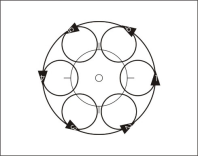 6 following each other circle 6 single rings left
6 following each other circle 6 single rings left
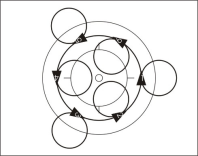 6 following each other half circle 3 single rings left 3 single rings right
6 following each other half circle 3 single rings left 3 single rings right
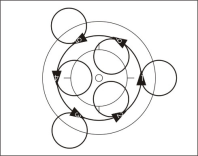 6 following each other circle 3 single ring left 3 single ring right
6 following each other circle 3 single ring left 3 single ring right
 6 following each other half circle 6 single rings right
6 following each other half circle 6 single rings right
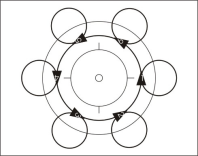 6 following each other circle 6 single rings right
6 following each other circle 6 single rings right
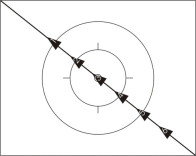 6 following each diagonal pull
6 following each diagonal pull
 6 following each other diagonal pull 3 s.r.l. 3 s.r.r.
6 following each other diagonal pull 3 s.r.l. 3 s.r.r.
 6 following each other half eight
6 following each other half eight
 6 following each other eight
6 following each other eight
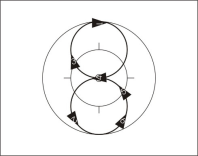 6 following each other eight through
6 following each other eight through
 6 next to each other shortline
6 next to each other shortline
 6 next to each other shortline 6 single rings left
6 next to each other shortline 6 single rings left
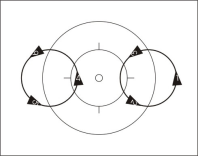 3 following each other double circle
3 following each other double circle
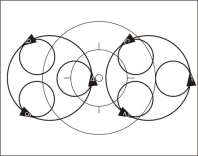 3 following each other double circle 6 s.r.l.
3 following each other double circle 6 s.r.l.
 3 next to each other shortline opposite direction
3 next to each other shortline opposite direction
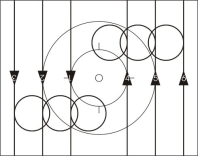 3 next to each other shortline opposite direction 6 single rings left
3 next to each other shortline opposite direction 6 single rings left
 3 next to each other shortline opposite direction through
3 next to each other shortline opposite direction through
 3 next to each other shortline opposite direction through 6 single rings left
3 next to each other shortline opposite direction through 6 single rings left
 3 next to each other shortline opposite direction through 3 mills
3 next to each other shortline opposite direction through 3 mills
 3 next to each other shortline opposite direction half counter single ring
3 next to each other shortline opposite direction half counter single ring
 3 next to each other shortline opposite direction counter single ring
3 next to each other shortline opposite direction counter single ring
 2 following each other shortline
2 following each other shortline
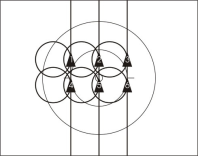 2 following each other shortline 6 single rings left
2 following each other shortline 6 single rings left
 Triple circle
Triple circle
 2 connected half circle
2 connected half circle
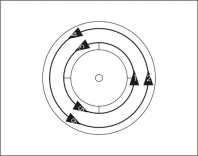 2 connected circle
2 connected circle
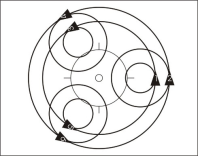 2 connected half circle 2 connected single rings left
2 connected half circle 2 connected single rings left
 2 connected circle 2 connected single rings left
2 connected circle 2 connected single rings left
 2 connected half circle 6 single rings left
2 connected half circle 6 single rings left
 2 connected circle 6 single rings left
2 connected circle 6 single rings left
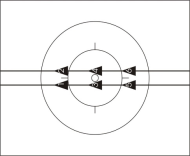 2 connected following each other longline
2 connected following each other longline
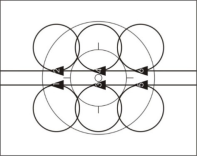 2 connected following each other longline 3 single rings right 3 single rings left
2 connected following each other longline 3 single rings right 3 single rings left
 2 connected shortline
2 connected shortline
 2 connected shortline 2 connected single rings left
2 connected shortline 2 connected single rings left
 2 connected shortline 2 connected single rings right
2 connected shortline 2 connected single rings right
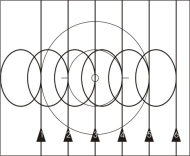 2 connected shortline 6 single rings left
2 connected shortline 6 single rings left
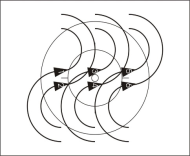 2 connected shortline half counter single ring
2 connected shortline half counter single ring
 2 connected shortline counter single ring
2 connected shortline counter single ring
 Three Mills
Three Mills
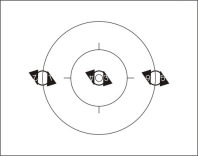 Three inside rings
Three inside rings
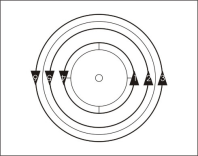 3 connected half circle
3 connected half circle
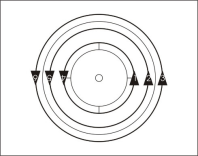 3 connected circle
3 connected circle
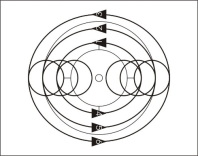 3 connected half circle 6 single rings left
3 connected half circle 6 single rings left
 3 connected circle 6 single rings left
3 connected circle 6 single rings left
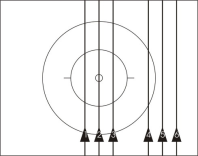 3 connected shortline
3 connected shortline
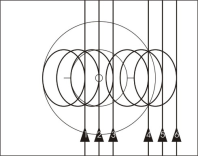 3 connected shortline 6 single rings left
3 connected shortline 6 single rings left
 3 connected shortline opposite direction
3 connected shortline opposite direction
 3 connected shortline opposite 6 single rings left
3 connected shortline opposite 6 single rings left
 2 connected around 1
2 connected around 1
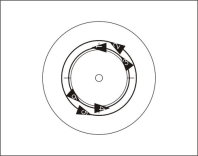 Two chains half circle
Two chains half circle
 Two chains circle
Two chains circle
 Two chains half circle raiser
Two chains half circle raiser
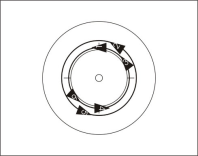 Two chains circle raiser
Two chains circle raiser
 Two saddle-grip half circle
Two saddle-grip half circle
 Two saddle-grip circle
Two saddle-grip circle
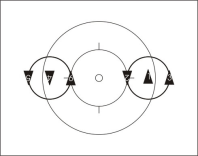 Two Turbines
Two Turbines
 Two Turbines 3 spinnings
Two Turbines 3 spinnings
 Two Mills
Two Mills
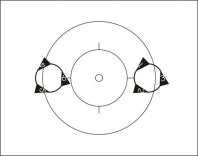 Two inside rings
Two inside rings
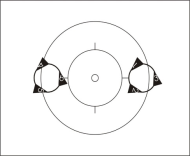 Two outside rings
Two outside rings
 Two outside rings half surrounding followed by two inside rings half surrounding
Two outside rings half surrounding followed by two inside rings half surrounding
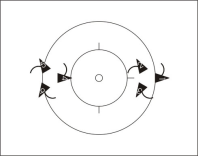 Two stars outside
Two stars outside
 6 connected half circle
6 connected half circle
 6 connected circle
6 connected circle
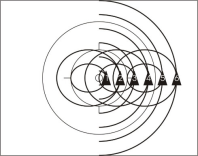 6 connected half circle 2 connected single rings left
6 connected half circle 2 connected single rings left
 6 connected circle 2 connected single rings left
6 connected circle 2 connected single rings left
 6 connected half circle 6 single rings left
6 connected half circle 6 single rings left
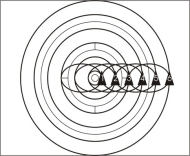 6 connected circle 6 single rings left
6 connected circle 6 single rings left
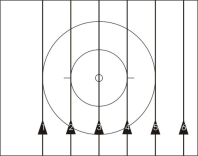 6 connected shortline
6 connected shortline
 6 connected shortline 2 connected single rings left
6 connected shortline 2 connected single rings left
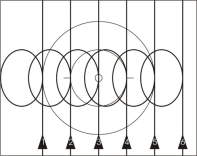 6 connected shortline 6 single rings left
6 connected shortline 6 single rings left
 6 next to each other shortline half counter single ring
6 next to each other shortline half counter single ring
 6 next to each other shortline counter single ring
6 next to each other shortline counter single ring
 Surrounding 5 around 1
Surrounding 5 around 1
 Coach half circle
Coach half circle
 Coach circle
Coach circle
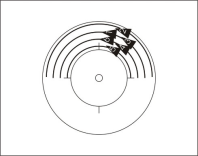 Coach half circle raiser
Coach half circle raiser
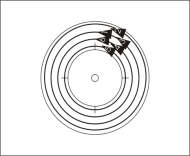 Coach circle raiser
Coach circle raiser
 Snake half circle
Snake half circle
 Snake Circle
Snake Circle
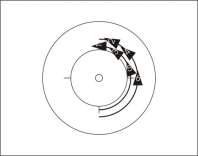 Chain half circle
Chain half circle
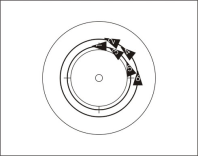 Chain Circle
Chain Circle
 Chain half circle raiser
Chain half circle raiser
 Chain circle raiser
Chain circle raiser
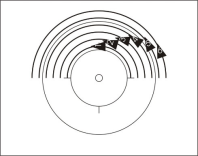 Saddlegrip half circle
Saddlegrip half circle
 Saddlegrip Circle
Saddlegrip Circle
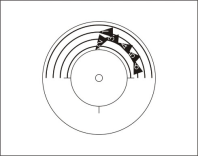 Saddlegrip pass through
Saddlegrip pass through
 Saddlegrip-ring
Saddlegrip-ring
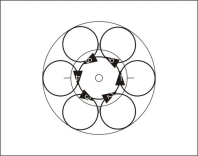 Saddlegrip-ring 6 single rings right
Saddlegrip-ring 6 single rings right
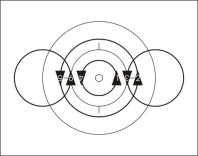 2 connected wingmill opposite direction door
2 connected wingmill opposite direction door
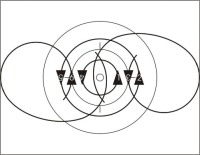 2 connected wingmill opposite direction door simultaneously
2 connected wingmill opposite direction door simultaneously
 3 connected wingmill
3 connected wingmill
 3 connected wingmill half surrounding 6 single rings right
3 connected wingmill half surrounding 6 single rings right
 3 connected wingmill 6 single rings right
3 connected wingmill 6 single rings right
 2 connected wingmill
2 connected wingmill
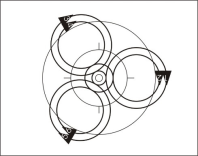 2 connected wingmill half surrounding 2 connected single rings right
2 connected wingmill half surrounding 2 connected single rings right
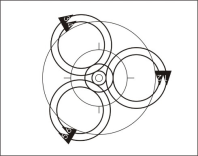 2 connected wingmill 2 connected single rings right
2 connected wingmill 2 connected single rings right
 2 connected wingmill half surrounding 6 single rings right
2 connected wingmill half surrounding 6 single rings right
 2 connected wingmill 6 single rings right
2 connected wingmill 6 single rings right
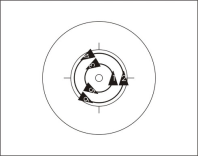 2 connected wingring
2 connected wingring
 3 connected wingmill mill with 4 following each other circle
3 connected wingmill mill with 4 following each other circle
 3 connected wingring insidering with 4 following each other circle
3 connected wingring insidering with 4 following each other circle
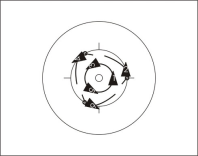 2 connected wingmill mill with 3 spinnings
2 connected wingmill mill with 3 spinnings
 Mill
Mill
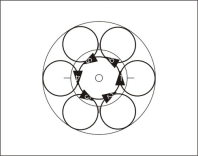 Mill 6 single rings right
Mill 6 single rings right
 Insidering around 2
Insidering around 2
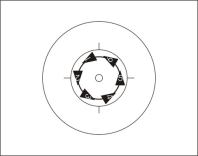 Insidering
Insidering
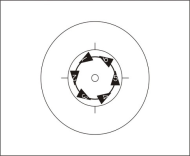 Ring with opposite grips
Ring with opposite grips
 Ring with opposite grips half surrounding followed by insidering half surrounding
Ring with opposite grips half surrounding followed by insidering half surrounding
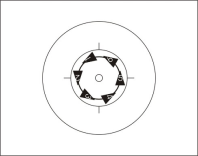 Outsidering
Outsidering
 Outsidering half surrounding followed by insidering half surrounding
Outsidering half surrounding followed by insidering half surrounding
 Half door
Half door
 Door
Door
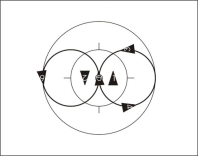 Half opposite direction door
Half opposite direction door
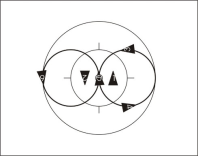 Opposite direction door
Opposite direction door
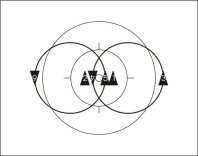 Opposite direction door simultaneously
Opposite direction door simultaneously
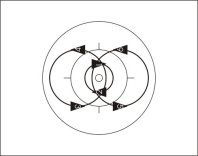 Mill opposite direction door
Mill opposite direction door
 Double door
Double door
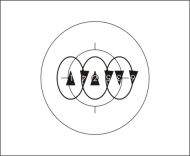 Double door opposite direction
Double door opposite direction
 Half doorring
Half doorring
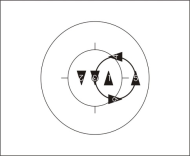 Doorring
Doorring
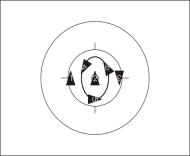 Half double doorring
Half double doorring
 Double dooring
Double dooring
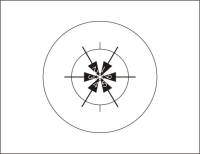 Star inside 6 single rings left
Star inside 6 single rings left
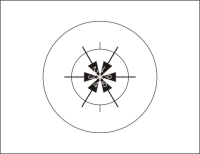 Star inside
Star inside
 Star outside
Star outside
 Star outside 6 single rings left
Star outside 6 single rings left
 Two stars inside 1⁄2 turn on the spot
Two stars inside 1⁄2 turn on the spot
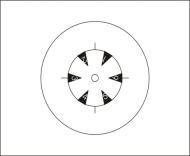 Star inside 1⁄2 turn on the spot
Star inside 1⁄2 turn on the spot
 Star inside 1 turn on the spot
Star inside 1 turn on the spot
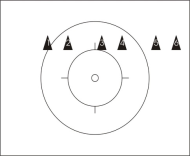 2 connected raiser turn on the spot (T)
2 connected raiser turn on the spot (T)
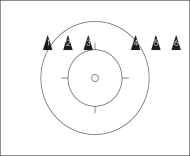 3 connected raiser turn on the spot (T)
3 connected raiser turn on the spot (T)
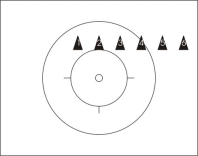 6 connected raiser turn on the spot (T)
6 connected raiser turn on the spot (T)